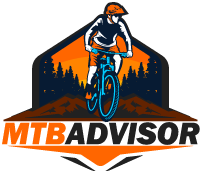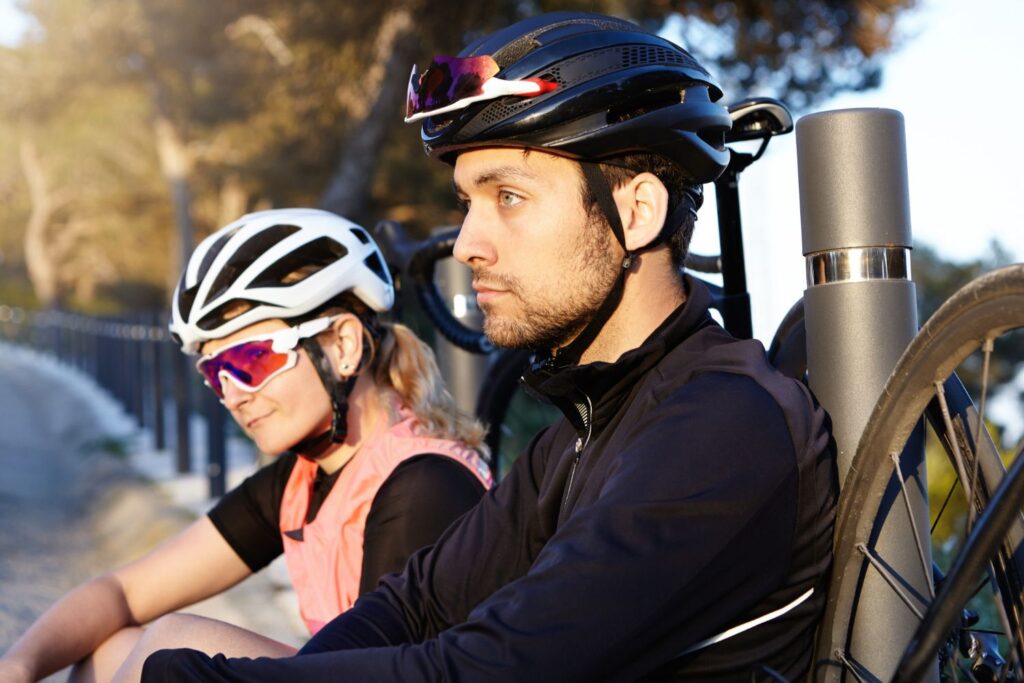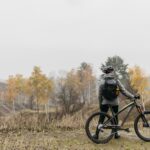Understanding Your Equipment
Using the Wrong Bike Size
It’s no secret that using the wrong bike size can make your rides a total nightmare. Riding a bike that’s too small or too big can lead to discomfort and even injuries. Imagine trying to ride a bike with a frame that feels like it’s meant for a 10-year-old while you are six feet tall. Not great, right?
That is why it’s crucial to find a bike that fits you well. A well-fitted bike enhances your control, comfort, and efficiency. Plus, it helps in preventing knee, back, and neck pain. You might wonder how to find that perfect fit. Here are some simple steps:
- Stand Over the Frame: There should be about 1-2 inches of clearance above the top tube when you stand over the bike.
- Seat Height: When sitting on the saddle with your heel on the pedal, your leg should be straight. Adjust the seat so that when you pedal, there’s a slight bend in your knee.
- Reach: Your hands should easily reach the handlebars without feeling cramped or stretched.
Inefficient Gear Selection
Have you ever felt like you were spinning your wheels but getting nowhere? That’s often a result of poor gear selection. Understanding how to use your gears effectively can greatly improve your riding experience. Many riders, especially beginners, tend to either stay in one gear way too long or switch gears too frequently, which can lead to a tiresome ride.
To avoid this mistake, familiarize yourself with your bike’s gearing. As a rule of thumb, use lower gears for climbing and higher gears on flat terrain or downhill. Shift before you need to, not during intense moments. If you’re approaching a hill, gear down in advance instead of waiting until you are knee-deep into the climb.
Braking Technique
Improper Brake Usage
Brakes are there for a reason, but using them incorrectly can send you hurtling over the handlebars. A common mistake is using only one brake, often the front. It’s crucial to use both brakes equally. Using just the front brake can lead to dramatic face plants.
When approaching a descent or a sharp turn, practice feathering the brakes—this means applying them gently instead of slamming them. It allows for better control and maintains your speed. Additionally, remember to brake early. Anticipating stops or turns will allow you to deal with obstacles more smoothly.
Riding with Fingers on the Brake Levers
This might sound trivial, but riding with your fingers resting on the brake levers can hinder your control. It limits your ability to react quickly when you need to shift your body weight. Instead, focus on ensuring your fingers hover over the levers and are ready for action when necessary. It’ll make your rides feel much more fluid and controlled.
Body Positioning
Poor Posture
You wouldn’t believe how much posture influences your riding experience! Slumping your shoulders and leaning too far forward can make handling a bike more laborious than it needs to be. It is essential to maintain a relaxed yet engaged posture. Your hips should sit over the pedals while your elbows are slightly bent to absorb shocks.
This balanced position helps you handle uneven terrains effectively. Try experimenting with your body position. Shift slightly backward when descending and lean lower into your bike when going uphill. Your body plays a massive role in keeping your center of gravity steady, so be conscious of how you sit on that heap of metal.
Looking Ahead
Ever find yourself staring at your handlebars instead of the trail ahead? It’s a common habit, but looking too close to you can lead to trouble. Your brain needs time to process what’s coming up on the path, so direct your gaze to the area where you want to go instead of where you are. It sounds simple, but it’s game-changing!
Try this: Choose a point on the trail that’s around 5-10 yards ahead of you and focus on that. You will find yourself anticipating obstacles and preparing for them without even thinking about it.
Trail Etiquette and Awareness
Ignoring Other Trail Users
Biking trails are a shared space, and the golden rule is to respect everyone on it. Failing to yield or communicate properly can lead to frustrating encounters. If you see a walker or fellow rider, give a friendly bell or shout before passing. Being polite not only shows good manners but also keeps everyone safe.
Also, remember to yield to those who are uphill. If you’re going downhill and someone is climbing, it’s your responsibility to let them pass first. A little courtesy goes a long way in keeping the trail community strong and amicable.
Ignoring Trail Conditions
Before heading out, always check trail conditions. Riding on freshly muddy trails not only damages the trail but also influences your ride experience. Slippery or muddy trails can lead to skidding and crashing, while dry trails enable smoother rides. Similar to road conditions, it is essential to choose the right moment to hit the trails. Check local websites or forums for up-to-date information on trail conditions.
Regular Maintenance and Preparation
Neglecting Bike Maintenance
It can be easy to overlook the regular upkeep your bike needs, but neglect can lead to poor performance and costly repairs. Regular maintenance checks are essential for your bike’s longevity. Here are a few checks you should always perform:
- Tires: Check air pressure and ensure there are no visible punctures or damage.
- Brakes: Ensure your brake pads are not worn down to the metal.
- Chains: Oil the chain regularly and check for stretch or rust.
If you’re unsure where to start, consider taking it to a local shop for a tune-up periodically. Not only will your bike run smoother, but you’ll also enjoy peace of mind knowing everything is functioning well.
Ignoring Fitness Levels
Jumping straight into challenging trails without considering your fitness level can lead to fatigue and disappointment. It’s essential to assess how fit you are and choose trails that match your current endurance and skill set. Also, remember that biking is an activity that improves with practice.
Start with shorter, easier trails and gradually build your way up to more challenging ones. You’ll be surprised how much your skills and stamina improve with consistency. Join local biking groups to ride with more experienced cyclists. It’s a win-win: you get to learn, improve, and make new friends along the way.
Final Thoughts
Mountain biking is an exhilarating adventure, but avoiding these common mistakes can significantly enhance your riding experience. From choosing the right bike size to mastering body positioning and trail etiquette, being mindful will keep you safe and make your rides more enjoyable.
Keep working on your skills and don’t forget to have fun while you’re at it. Every ride is an opportunity to learn something new, laugh at your misadventures, and appreciate nature. Now get out there, avoid these mistakes, and pedal your way to adventures! Who knows what trails might be calling your name next? Happy riding!






